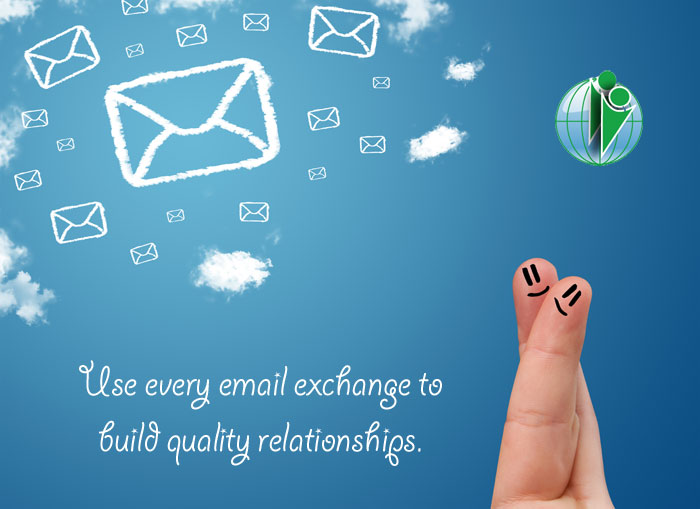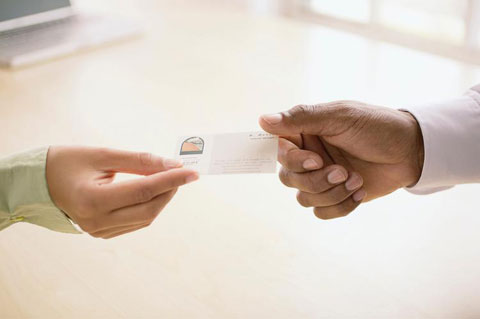How to Engage Customers via Email
This page may contain links to Amazon.com or other sites from which I may receive commission on purchases you make after clicking on such links. Read my full Disclosure Policy

How many business emails do you send out every week? 10? 50? 100? 500?
The higher the number, the easier it is to slip into bad habits – being too casual, making typos, the list goes on. In some cases, these mistakes will be overlooked or forgiven, but they can lead to missed opportunities or lost business — and you may not even realize what went wrong.
I send out about 200 business emails per week, so I was pleased to receive these guidelines for writing effective emails from Natalie Smith and to share them with you.

Despite the growing popularity of social media, email still plays a vital role as a communication channel for customer service. As much as face-to-face and phone conversations are more frequently used for complicated issues, research shows that customers prefer to use online communication for simple matters such as finding a product or checking an account balance. Knowing that most interactions with customers involve routine matters, your company should use every email exchange to build quality relationships. By writing effective emails with professional addresses, you can take advantage of this tool to satisfy your customers and create value for your brand. Let us see some useful tips on how to engage customers via email.
Respond quickly and regularly
Unsurprisingly, customers expect to receive prompt responses to their email messages. If you manage to provide a quick reply, you can establish a competitive advantage because many businesses either delay their responses or ignore customer email inquiries altogether. For example, a study conducted by Jupiter Communications shows that 42 percent of TOP-500 businesses took five days to respond to their clients’ email messages. Moreover, more than one-third of the companies never responded at all to their incoming messages. In order to avoid such a practice, your company should set specific standards for checking and responding to emails. In all cases, customers should receive a reply within 24 hours. If possible, have your team manage email correspondence at least twice per day. You can also have someone send email messages to your competitors to make sure your company always provides quicker service.
Use proper language
In written communication, there is nothing more off-putting than texts that teem with spelling errors and poor grammar choices. Therefore, to inspire customer confidence, always check the spelling and grammar of your correspondence. Additionally, emails sent from your company should always use clear and concise language to avoid ambiguity. Everyone in your firm should proofread their messages before sending them, as part of the effort to make a professional, polished presentation. If you discover that your team members lack writing skills, find books, websites, college classes, or other educational opportunities that can boost their quality of writing.
Set the right tone
There are many important ways to connect to your customers, and using the right tone is one of them. Email correspondence does not include the nonverbal component of face-to-face conversations, so you must rely on textual cues to establish the tone of your customers’ emails. Accordingly, always adjust the tone of your email messages to match your customers’ tone. For instance, when customers use casual language, you should respond in a similar manner. Although you can use emoticons and other elements to infer cordiality, remember to provide a professional response that reflects well on your business. Serious messages about complaints or business proposals should receive a formal, serious reply. In all correspondence, email messages from your company should entail positive words, while avoiding negative phrases. While you can be humoristic at times, be careful not to sound sarcastic or arrogant.
Be personal
Companies that receive large numbers of emails often depend on templates and scripts to expedite their replies, which is perfectly understandable. However, companies should never forget to add a personalized touch that shows customers that their team pays attention to their concerns. In that sense, as email correspondence helps your company build better relationships with your clients, make sure everyone on your team shows empathy, understanding, and courtesy when responding to inquiries. Your email responses should thus address customers by name, personally introduce the team member who is writing, restate the topic of the correspondence, and provide an adequate resolution. Furthermore, if necessary, make sure your customers receive updates until you have satisfactorily addressed all of their concerns.
Stay in touch
Rather than ending email conversations after resolving a problem, your team should continue to engage customers by sending follow-up messages to make sure they have received a satisfactory resolution to their concerns. When doing so, make customers aware of special offers on your products and services to encourage repeat business. Remember that every email inquiry represents an opportunity to build relationships and sales.
Want to boost your email response rate? Check out these 8 follow-up email templates!
Send interesting newsletters
Send customers your email newsletter, but make sure you comply with applicable anti-spam laws. People who have not explicitly consented to receive your newsletter might consider it spam, causing legal problems for your company. When sending your newsletter, try to use compelling headlines to attract customers’ attention and make them open the email in the first place. Use your newsletter not only to provide updated info about products and services, but also to highlight new content and features on your websites. Send your customers emails with engaging texts and videos, as well as links to helpful content – they will appreciate not being asked anything in return. In any case, use emails to inform and entertain your customers so that they won’t feel bothered when receiving the newsletter.
Integrate call-to-action options
Finally, when sending email messages, your team should always inform customers of some ways to get additional information. For example, “Click to Call” or “Click to Chat” links can quickly connect customers to company representatives who can provide information or solutions not included in your email messages. To encourage engagement, create a custom graphic for your links to a chat or call, and prominently place it in your email responses. Make sure that those links are eye-catching and attractive.
When you provide fast and efficient solutions via email, you get the opportunity to provide excellent customer service, build lasting relationships, and promote your products. Best of all, you will create a great reputation for your brand, which will deliver many future rewards.
Image © ra2studio / DepositPhotos




Thanks for all the great tips! One of my pet peeves is businesses who provide a “Contact Us” form on their website…and they never reply. Are their emails from such forms going somewhere they don’t realize? Surely they aren’t purposely blowing off potential customers?
Yes, that’s very frustrating – you don’t know whether they received it or not. When I fill one out, I’m always very careful that I don’t use any words or phrases that might cause my message to be flagged as spam.
It’s also very important that those of us who have contact forms test them from time to time to make sure we are receiving those messages!